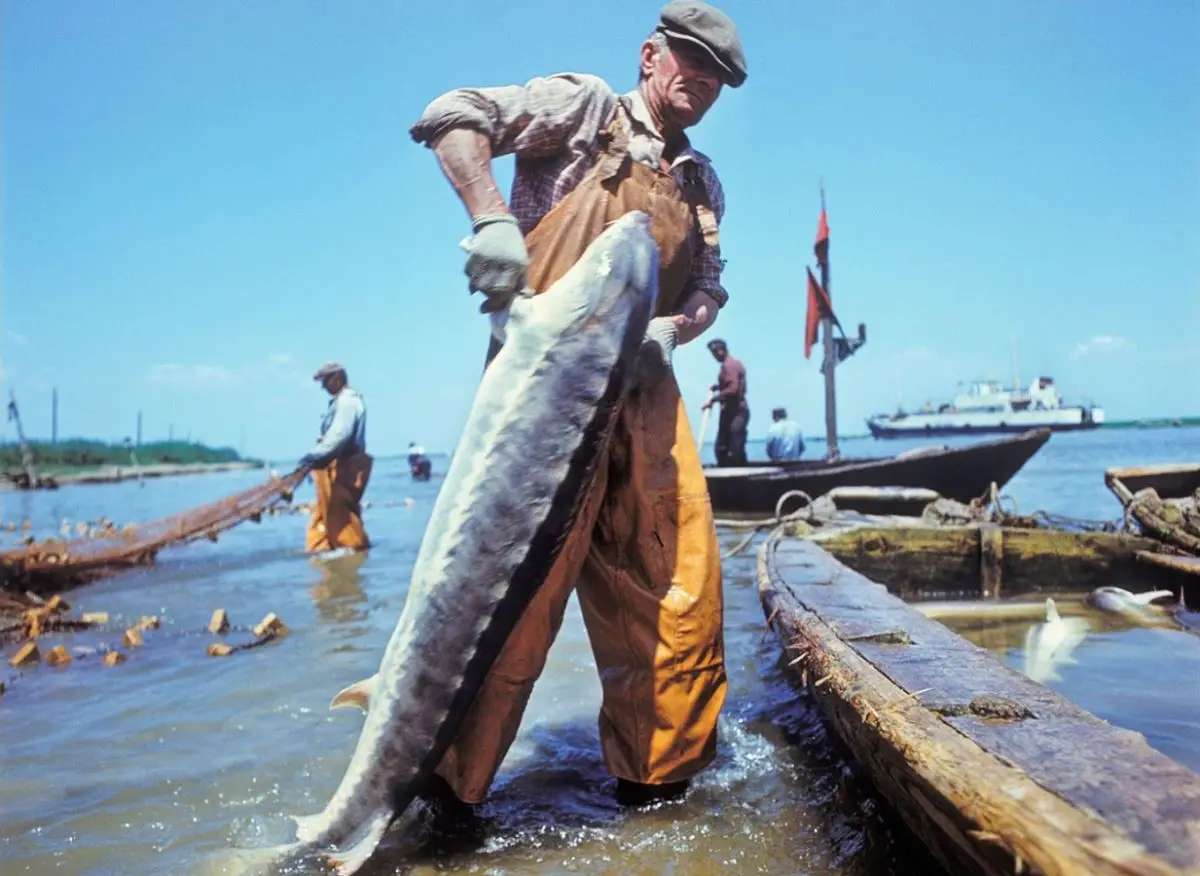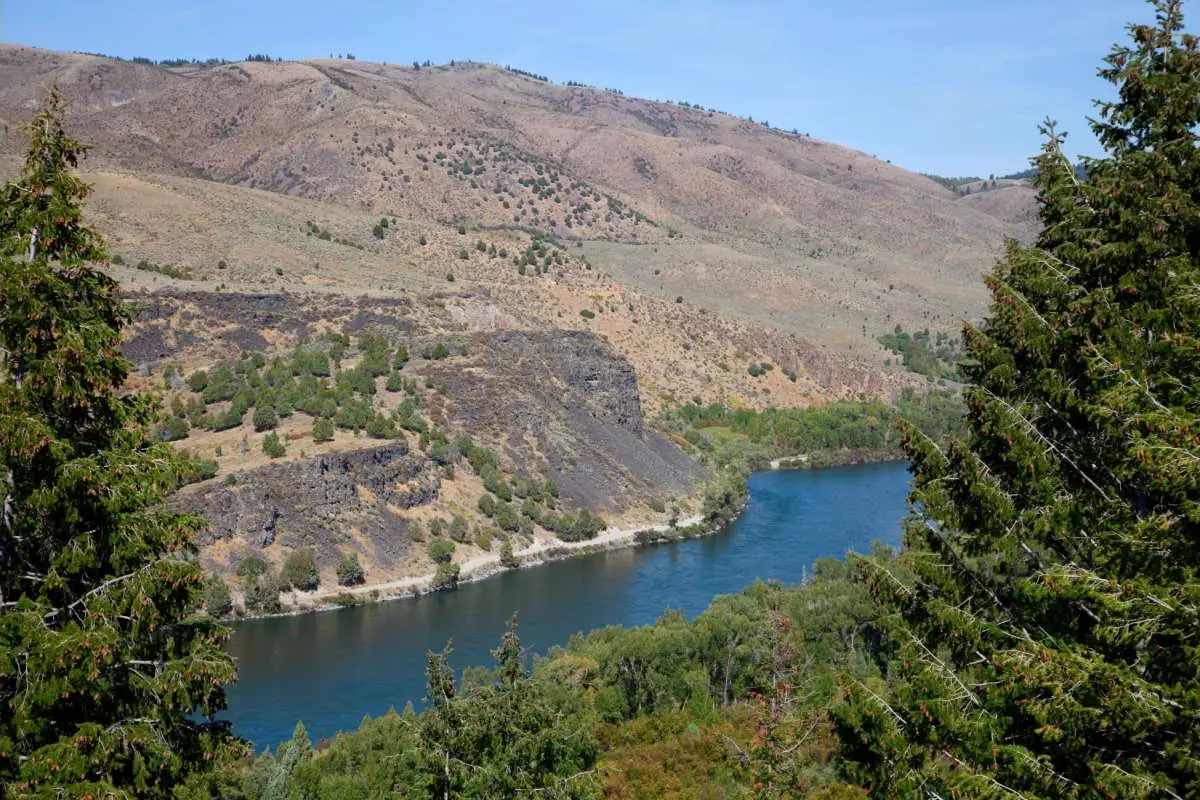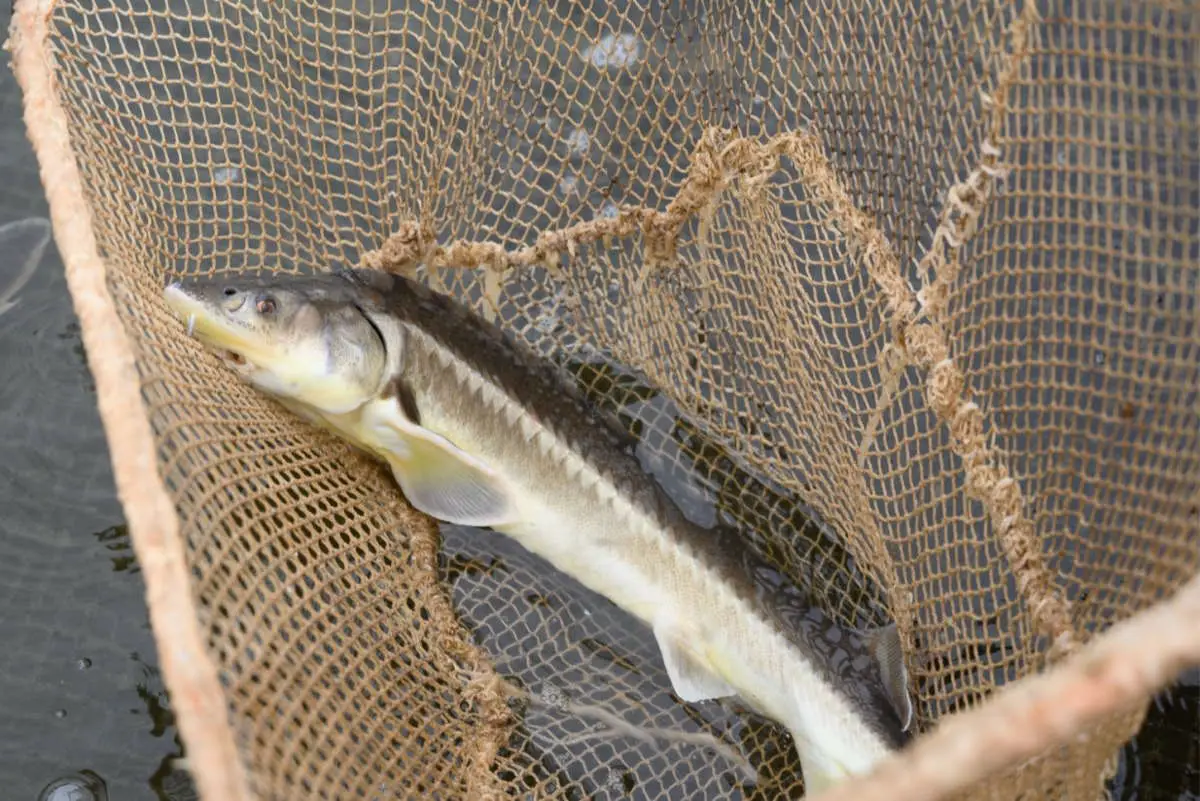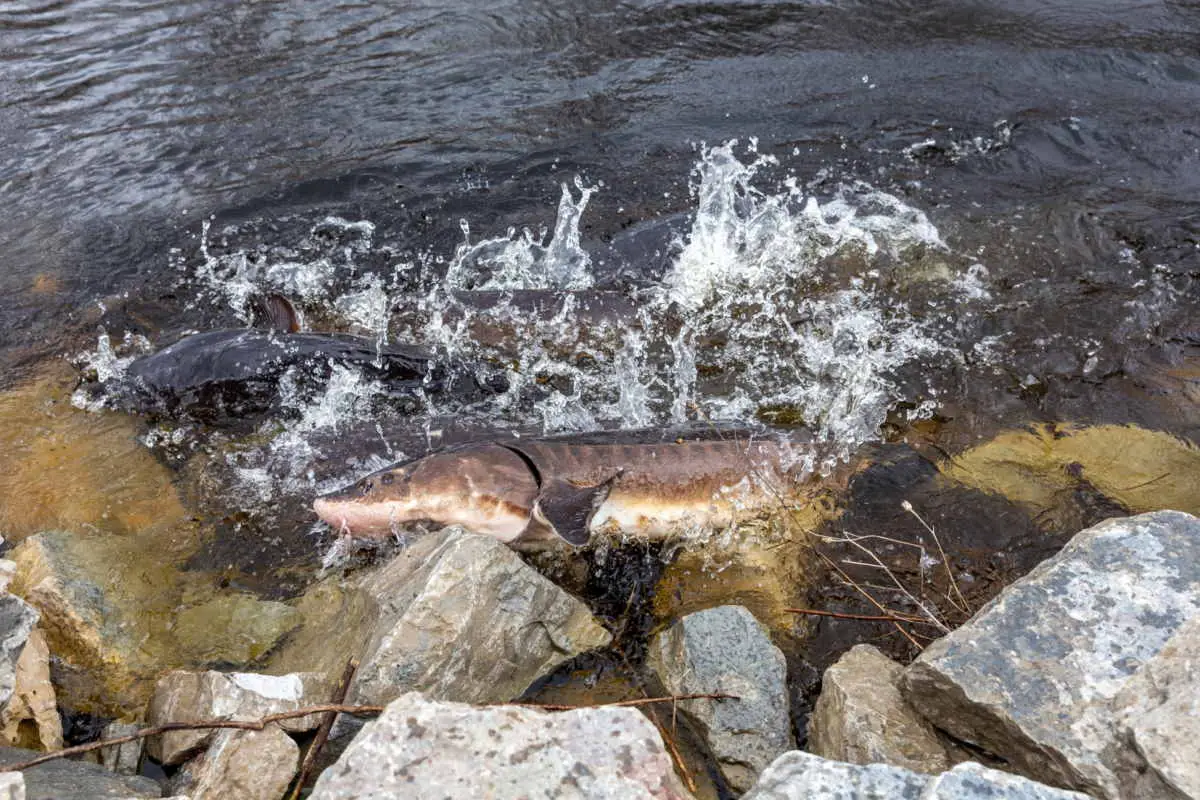Sturgeon size is a hotly debated topic. Some people say they are huge, and some say they grow to be as long as 16 feet. What’s the truth? Can different types of sturgeon reach different sizes, how does their age affect how large they become, and how does location factor into how big the fish can get? These are all questions I hope to answer in this article!
What is the World Record Largest Sturgeon?
The largest sturgeon ever verified caught was in 1981 in the Amur River, Russia. The fish weighed 1200 pounds and measured 16 feet long.
The fish was caught by a local area resident Chen Lin. When Photographed, the fish was so large they didn’t manage to get the whole fish in the picture.
How Big Can Sturgeon Get?
There is not a clear answer to how large sturgeons can get, but it is rumored that they can get up to feet long and over 2000 pounds. One reason for this is that sturgeon continue to grow in size throughout their life, unlike humans that stop growing in their early 20’s.
Do Different Types of Sturgeon Grow to a Different Size?
Different types of sturgeon grow at different rates, but the largest type is Beluga sturgeon. It’s said that they can get up to 20 feet in size. There are breeding programs for this species in Russia because they are so desirable and rare in nature. Because of how they are bred, the Russian sturgeon grow to be larger than other types.
White sturgeon are another giant sturgeon that sometimes grow to be as long as 16 feet. The current verified record is 12 foot 4 inches with a 53-inch girth, estimated to be over 1100 pounds. Check out this article from Game and Fish Mag.
Lake sturgeon are among one of the smaller species. In 2019 a lake Winnebago record was set at 85.5 inches and 171 pounds. For this species, that was a large fish that was possibly over 100 years old. Check out this article from Wideopenspaces.com.
Does Sturgeon Size Depend on the Location?
Sturgeon will grow to be larger in colder water. One reason for this is that they need more food to survive the cold temperature and maintain their metabolism.
In addition, sturgeon are bottom feeders who spend most of their time in the mud on sand or gravel bottoms looking for prey beneath them, such as clams, worms, sand shrimp, or dead fish.
It is thought that sturgeon with open access to ocean waters migrate to areas with a better food supply, accounting for their larger size.
When sturgeon is landlocked in a lake or behind a dam, they cannot grow as large because of the lack of nutrients. Another factor is thought to be water quality. Fast running water is generally cooler, cleaner, and has more oxygen content.
Does Age Affect How Big a Sturgeon Can Get?
Sturgeon size is affected by how old the sturgeon is because they never stop growing. Their size can estimate some species of sturgeon’s age.
Lake Winnebago sturgeons reach an average of 50 inches at age 20, and Columbia river white sturgeon average 63 inches at age 20. However, recent studies have suggested that sturgeon’s growth rates vary widely after five years, making it hard to be sure of age without a tissue sample.
How Do You Measure a Sturgeon?
There are a few different methods to measure how big sturgeons are. One way is by how tall the fish’s back fin stands from the ground. Another measurement method includes how many inches of thickness they have at their largest circumference(aka girth).
The most common is to measure how long it stretches when you lay them out on its side and measure from its nose to the tip of the tail.
In Oregon and Washington state, the official way of measuring a sturgeon is called fork length. First, you stretch the fish, and then you start the tape measure in the base of the V (or fork) of the tall and measure to the tip of the nose.
Conclusion
The size of a sturgeon can vary, but it depends mainly on how old they are. Different species grow at different rates. How big they get is also dependent on how cold the water is, food supply, and environmental quality.
They never stop growing, so tomorrow, there could be a new world record size sturgeon. I hope this article has helped you understand sturgeon and what can affect it.





